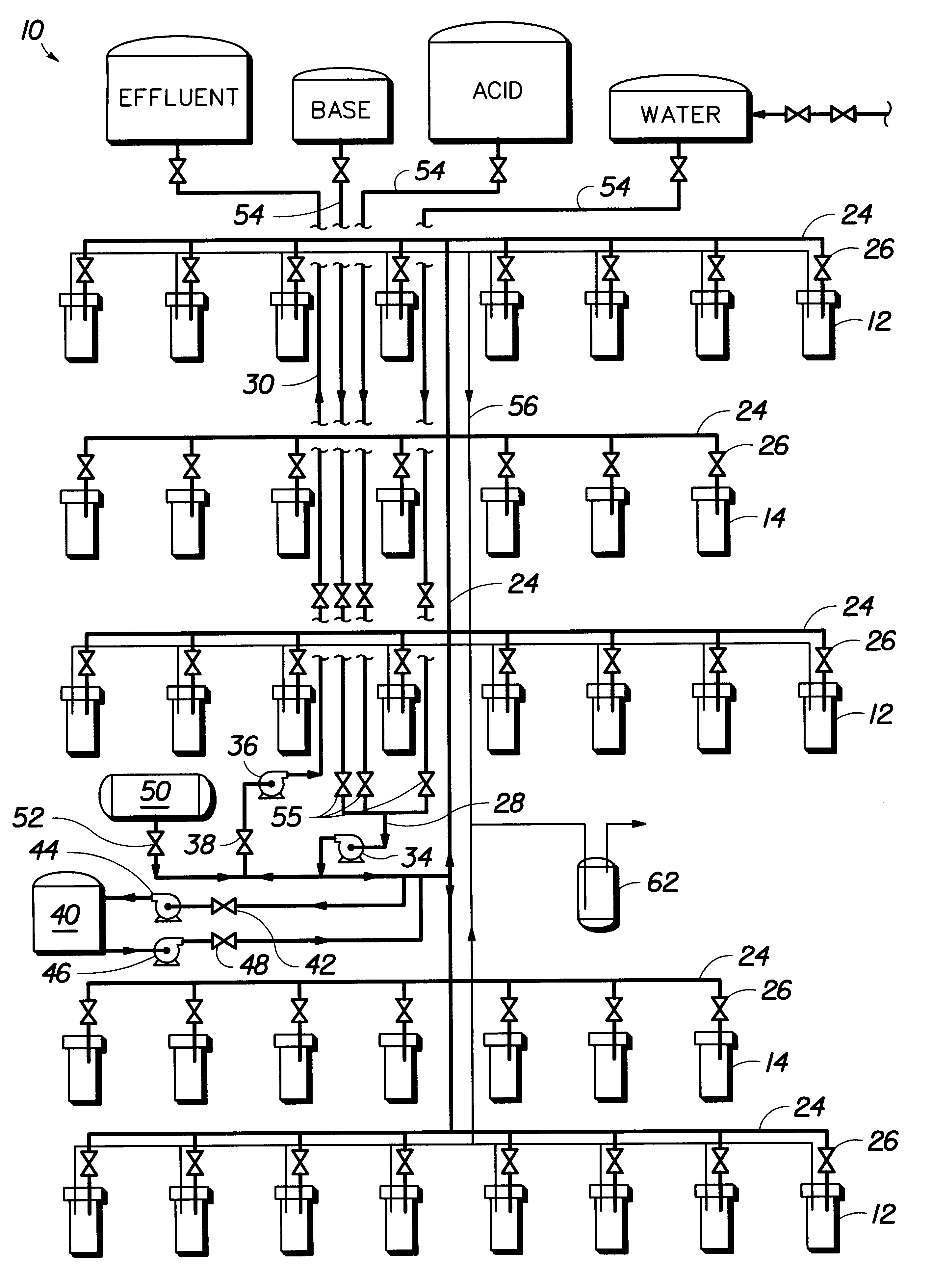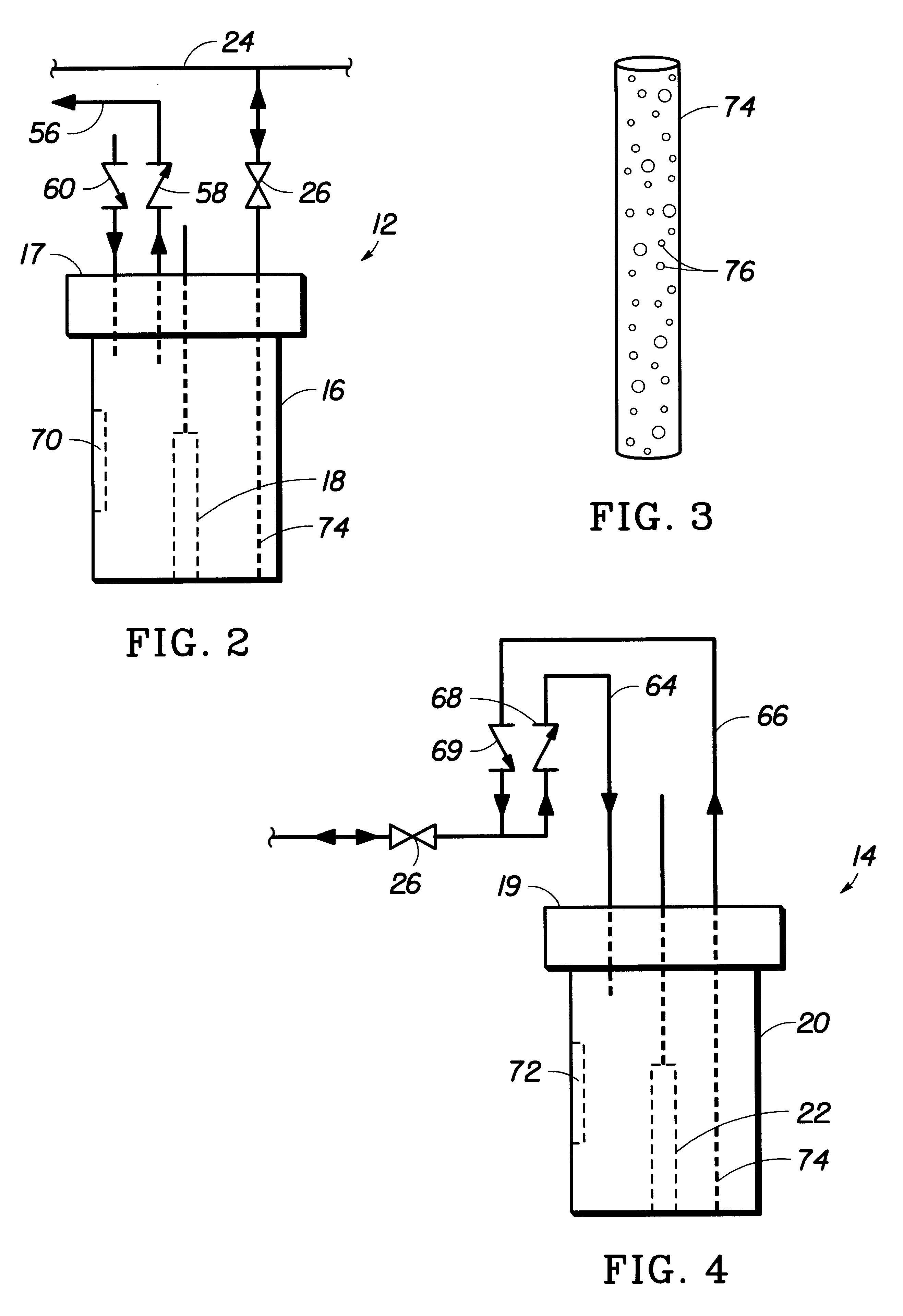Fluid management system for electrokinetic remediation
a technology of electrokinetic remediation and fluid management system, applied in the field of electrokinetic phenomena, can solve the problems of net loss of water from the vicinity of some electrodes, net gain of fluid in the vicinity, and high fluid loss around some electrodes
- Summary
- Abstract
- Description
- Claims
- Application Information
AI Technical Summary
Problems solved by technology
Method used
Image
Examples
example 2
(Hypothetical)
The system disclosed above may be used at a site having the following soil conditions: high water table, clay soil, and metallic contaminants such as chromium and cadmium. The water table is high, (i.e., it is at least higher than the lowest point of the electrode wells below the surface). The soil matrix immediately surrounding the wells is saturated with water, so the tendency is for fluids not to flow out of the well in significant amounts when electroremediation is turned off. The predominately clay-type soil in the vicinity of the electrode array causes electroosmotic flow to occur through the soil between the electrodes. Some electrode wells will accumulated fluids, others will lose fluids, depending upon the direction of electroosmotic flow.
After the electroremediation process is started, the monitoring, fluid chemistry adjustment, and fluid withdrawal steps would be carried out in the same manner as in Example 1. A fluid level adjustment step would be carried o...
example 3
(Hypothetical)
The system disclosed above may be used at a site having the following soil conditions: low water table, sandy soil, and metallic contaminants such as chromium and cadmium ions. The water table is low (i.e., it is at least lower than the lowest point of the electrode wells below the surface). The soil matrix immediately surrounding the wells is, therefore, not saturated with water, so the tendency is for fluids is to drain out of the well in significant amounts on a continuous basis. The soil conditions are predominantly of a sandy type so that electrically-driven electroosmotic flow does not occur through the soil between the electrodes during electroremediation. After the electroremediation process is started, the following fluid management steps are used in conjunction with the apparatus similar to that shown in FIG. 1. The monitoring, fluid chemistry adjustment, and fluid withdrawal steps are carried out according to Example 1. Fluid level adjustment step is require...
PUM
| Property | Measurement | Unit |
|---|---|---|
| thickness | aaaaa | aaaaa |
| pH | aaaaa | aaaaa |
| pH | aaaaa | aaaaa |
Abstract
Description
Claims
Application Information
 Login to View More
Login to View More - R&D
- Intellectual Property
- Life Sciences
- Materials
- Tech Scout
- Unparalleled Data Quality
- Higher Quality Content
- 60% Fewer Hallucinations
Browse by: Latest US Patents, China's latest patents, Technical Efficacy Thesaurus, Application Domain, Technology Topic, Popular Technical Reports.
© 2025 PatSnap. All rights reserved.Legal|Privacy policy|Modern Slavery Act Transparency Statement|Sitemap|About US| Contact US: help@patsnap.com



